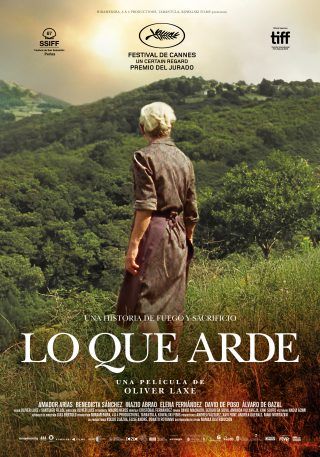At don Quijote, we usually recommend listening to music lyrics in Spanish, whether to practice the language, learn vocabulary, or even learn about other variants of the language of Cervantes. Today, we move to the rhythm of Spanish again to dance the most listened song of all times: "Despacito", by Luis Fonsi.
"Despacito" means "slowly" in Spanish, but the rise of the song to the top of charts worldwide has been all but slow. Only six months after its release date, Luis Fonsi's song made history for being the top streamed track ever, according to Universal Music Latin Entertainment. Although the Latin influence on pop culture is not new, the Spanish language hadn’t had such a large representation on the music scene since "Macarena" in 1996.
Continue reading this post in English or switch to the Spanish version.
“Despacito” is a song by Puerto Rican singer Luis Fonsi featuring Puerto Rican rapper Daddy Yankee. The song was written by Fonsi, Erika Ender, and Daddy Yankee. But the remix version featuring Canadian singer Justin Bieber “helped to improve the song's chart performance in numerous countries, including various number-one positions”. Anyway, this song has managed to do what more traditional artists of Spanish music couldn’t: to reach more than 4,600 million reproductions across the main streaming platforms, according to the record label mentioned above. "Streaming is a connector for audiences around the world and has helped my music reach every corner of the planet," Fonsi said in a statement. "It's really an honor that “Despacito” is now the most streamed song in history." "Despacito" also leads Billboard's streaming song list with 65.4 million digital song transmissions and sales of 137,000 downloads.
Hence, "Despacito" is not only a musical success for the Spanish-speaking world. Both Latin pop and urban song have millions of international fans who sing songs in Spanish despite not being native speakers. In fact, some Twitter users, such as Madison Sims @madisoncarlei_h, have come to joke about the subject "pretty sure I learned more Spanish by looking up the lyrics to "Despacito" than I learned all year from my actual Spanish teacher ". But Luis Fonsi himself has a hard time explaining the success of this song. "I don't know the exact reason why this song in particular has connected with a worldwide audience, especially with those who don't understand Spanish." In turn, Daddy Yankee defines music as a universal language, a form of expression that brings people together independently of their culture or the color of their skin. "People are more receptive to learn, identify and exchange their opinions in the digital world and learn more from each other. "
Next, we can enjoy the lyrics of the different covers of the song:
1. Luis Fonsi ‒ Despacito (Lyrics / Lyric Video) ft. Daddy Yankee

[Letra de "Despacito" ft. Daddy Yankee]
[Intro: Luis Fonsi & Daddy Yankee]
Ay, ¡Fonsi! ¡D.Y.!
Ohhh, oh, no, oh, no, oh
¡Hey, yeah!
Dididiri Daddy, go!
[Intro: Luis Fonsi & Daddy Yankee]
Sí, sabes que ya llevo un rato mirándote
Tengo que bailar contigo hoy
(¡D.Y.!) Vi que tu mirada ya estaba llamándome
Muéstrame el camino que yo voy
[Verso 1: Luis Fonsi & Daddy Yankee]
¡Oh!
Tú, tú eres el imán y yo soy el metal
Me voy acercando y voy armando el plan
Sólo con pensarlo se acelera el pulso (¡Oh, yeah!)
Ya, ya me está gustando más de lo normal
Todos mis sentidos van pidiendo más
Esto hay que tomarlo sin ningún apuro
[Estribillo: Luis Fonsi & Daddy Yankee]
Despacito
Quiero respirar tu cuello despacito
Deja que te diga cosas al oído
Para que te acuerdes si no estás conmigo
Despacito
Quiero desnudarte a besos despacito
Firmar las paredes de tu laberinto
Y hacer de tu cuerpo todo un manuscrito
(Sube, sube, sube, sube, sube)
[Post-Estribillo: Luis Fonsi & Daddy Yankee]
Quiero ver bailar tu pelo, quiero ser tu ritmo (Woah, woah)
Que le enseñes a mi boca (Woah, woah)
Tus lugares favoritos (Favorito, favorito, baby)
Déjame sobrepasar tus zonas de peligro (Woah, woah)
Hasta provocar tus gritos (Woah, woah)
Y que olvides tu apellido
[Verso 2: Daddy Yankee]
Si te pido un beso, ven, dámelo, yo sé que estás pensándolo
Llevo tiempo intentándolo, mami, esto es dando y dándolo
Sabes que tu corazón conmigo te hace bang-bang
Sabes que esa beba está buscando de mi bang-bang
Ven, prueba de mi boca para ver cómo te sabe
Quiero, quiero, quiero ver cuánto amor a ti te cabe
Yo no tengo prisa, yo me quiero dar el viaje
Empezamos lento, después salvaje
[Pre-Estribillo: Daddy Yankee]
Pasito a pasito, suave suavecito
Nos vamos pegando, poquito a poquito
Cuando tú me besas con esa destreza
Veo que eres malicia con delicadeza
Pasito a pasito, suave suavecito
Nos vamos pegando, poquito a poquito
Y es que esa belleza es un rompecabezas
Pero pa' montarlo aquí tengo la pieza
¡Oye!
[Estribillo: Luis Fonsi & Daddy Yankee]
Despacito
Quiero respirar tu cuello despacito
Deja que te diga cosas al oído
Para que te acuerdes si no estás conmigo
Despacito
Quiero desnudarte a besos despacito
Firmar las paredes de tu laberinto
Y hacer de tu cuerpo todo un manuscrito
(Sube, sube, sube, sube, sube)
[Post-Estribillo: Luis Fonsi & Daddy Yankee]
Quiero ver bailar tu pelo, quiero ser tu ritmo (Woah, woah)
Que le enseñes a mi boca (Woah, woah)
Tus lugares favoritos (Favorito, favorito, baby)
Déjame sobrepasar tus zonas de peligro (Woah, woah)
Hasta provocar tus gritos (Woah, woah)
Y que olvides tu apellido
[Verso 3: Luis Fonsi]
Despacito
Vamo' a hacerlo en una playa en Puerto Rico
Hasta que las olas griten "¡Ay, Bendito!"
Para que mi sello se quede contigo
¡Báilalo!
[Outro: Daddy Yankee & Luis Fonsi]
Pasito a pasito, suave suavecito
Nos vamos pegando, poquito a poquito
Que le enseñes a mi boca
Tus lugares favoritos
(Favorito, favorito, baby)
Pasito a pasito, suave suavecito
Nos vamos pegando, poquito a poquito
Hasta provocar tus gritos (Fonsi)
Y que olvides tu apellido (D.Y.)
Despacito
2. Justin Bieber – Despacito (Lyrics) ft. Luis Fonsi & Daddy Yankee [Pop]

[Intro: Justin Bieber]
Comin' over in my direction
So thankful for that, it's such a blessin', yeah
Turn every situation into heaven, yeah
Oh-oh, you are
My sunrise on the darkest day
Got me feelin' some kind of way
Make me wanna savor every moment slowly, slowly
You fit me tailor-made, love how you put it on
Got the only key, know how to turn it on
The way you nibble on my ear, the only words I wanna hear
Baby, take it slow so we can last long
[Verso 1: Luis Fonsi & Daddy Yankee]
¡Oh! Tú, tú eres el imán y yo soy el metal
Me voy acercando y voy armando el plan
Sólo con pensarlo se acelera el pulso (Oh, yeah)
Ya, ya me está gustando más de lo normal
Todos mis sentidos van pidiendo más
Esto hay que tomarlo sin ningún apuro
[Coro: Justin Bieber & Luis Fonsi, Daddy Yankee]
Despacito
Quiero respirar tu cuello despacito
Deja que te diga cosas al oído
Para que te acuerdes si no estás conmigo
Despacito
Quiero desnudarte a besos despacito
Firmo en las paredes de tu laberinto
Y hacer de tu cuerpo todo un manuscrito
(Sube, sube, sube
Sube, sube)
[Post-Coro: Luis Fonsi & Daddy Yankee]
Quiero ver bailar tu pelo, quiero ser tu ritmo (Woah, woah)
Que le enseñes a mi boca (Woah, woah)
Tus lugares favoritos (Favorito, favorito, baby)
Déjame sobrepasar tus zonas de peligro (Woah, woah)
Hasta provocar tus gritos (Woah, woah)
Y que olvides tu apellido
[Verso 2: Daddy Yankee]
Si te pido un beso, ven, dámelo, yo sé que estás pensándolo
Llevo tiempo intentándolo, mami, esto es dando y dándolo
Sabes que tu corazón conmigo te hace bom, bom
Sabes que esa beba está buscando de mi bom, bom
Ven, prueba de mi boca para ver cómo te sabe
Quiero, quiero, quiero ver cuánto amor a ti te cabe
Yo no tengo prisa, yo me quiero dar el viaje
Empecemos lento, después salvaje
[Pre-Coro: Daddy Yankee & Justin Bieber, Daddy Yankee]
Pasito a pasito, suave suavecito
Nos vamos pegando, poquito a poquito
Cuando tú me besas con esa destreza
Veo que eres malicia con delicadeza
Pasito a pasito, suave suavecito
Nos vamos pegando, poquito a poquito
Y es que esa belleza es un rompecabezas
Pero pa' montarlo aquí tengo la pieza
¡Oye!
[Coro: Justin Bieber & Luis Fonsi, Daddy Yankee]
Despacito
Quiero respirar tu cuello despacito
Deja que te diga cosas al oído
Para que te acuerdes si no estás conmigo
Despacito
Quiero desnudarte a besos despacito
Firmo en las paredes de tu laberinto
Y hacer de tu cuerpo todo un manuscrito
(Sube, sube, sube
Sube, sube)
[Post-Coro: Luis Fonsi & Daddy Yankee]
Quiero ver bailar tu pelo, quiero ser tu ritmo (Woah, woah)
Que le enseñes a mi boca (Woah, woah)
Tus lugares favoritos (Favorito, favorito, baby)
Déjame sobrepasar tus zonas de peligro (Woah, woah)
Hasta provocar tus gritos (Woah, woah)
Y que olvides tu apellido
[Puente: Luis Fonsi]
Despacito
This is how we do it down in Puerto Rico
I just wanna hear you screaming, "¡Ay, Bendito!"
I can move forever cuando esté contigo
¡Báilalo!
[Post-Coro: Daddy Yankee, Luis Fonsi & Justin Bieber]
Pasito a pasito, suave suavecito
Nos vamos pegando, poquito a poquito
Que le enseñes a mi boca
Tus lugares favoritos
(Favorito, favorito, baby)
Pasito a pasito, suave suavecito
Nos vamos pegando, poquito a poquito
Hasta provocar tus gritos (Fonsi)
Y que olvides tu apellido (D.Y.)
Despacito
3. Luis Fonsi ‒ Despacito (Lyrics) ft. Daddy Yankee - English Translation
[Intro: Luis Fonsi & Daddy Yankee]
Yes, you know that I’ve been looking at you for a long time
I must dance with you today (DY)
(Daddy Yankee)
I saw that the look in your eyes was calling me
Show me the path that I will take (Oh)
(Luis Fonsi)
You, you’re the magnet and I’m the metal
I am getting closer and making a plan
Simply thinking about it makes my heart race (Oh yeah)
(Daddy Yankee)
Now, I’m already liking it more than usual
All of my senses are asking for more
We cannot do this in a rush
(Luis Fonsi)
Slowly
I want to breathe in your neck slowly
Let me murmur things in your ear
So that you remember if you’re not with me
Slowly
Iwant to undress you in kisses slowly
Firmly in the walls of your labyrinth
And of your body, I want to create a manuscript
Up, up
Up, up, up
I want to see your hair dance
I want to be your rhythm
Want you to show my mouth
Your favorite places (Favorite, favorite baby)
Let me trespass your danger zones
Until I make you scream
And you forget your last name
(Daddy Yankee)
If I ask for a kiss come, give it to me
I know that you’re thinking about it
I’ve been trying to do it for awhile
Mami this is giving and giving it to you
You know that with me your heart goes bom bom!
You know that from me that babe is looking for a bom bom!
Come try my mouth and see if you like its taste
I want to see how much love fits in you
I’m not in a rush I want to experience this trip
Let’s start slowly, then savagely
Step by step, soft then softly
We come up against each other, little by little
When you kiss me in that state of distress
I see that you are malice and delicacy
Step by step, soft then softly
We come up against each other, little by little
And it’s just that your beauty is a puzzle
But to finish it here I have the missing piece
(Luis Fonsi)
Slowly
I want to breathe in your neck slowly
Let me murmur things in your ear
So that you remember if you’re not with me
Slowly
I want to undress you in kisses slowly
Firmly in the walls of your labyrinth
And of your body, I want to create a manuscript
Up, up, up, up
I want to see your hair dance
I want to be your rhythm
Want you to show my mouth
Your favorite places (Favorite, favorite baby)
Let me trespass your danger zones
Until I make you scream
And you forget your last name
Slowly
We’re gonna do it on a beach in Puerto Rico
Until the waves scream Oh Lord
So that my seal stays with you
(Daddy Yankee)
Step by step, soft then softly
We come up against each other, little by little
(Luis Fonsi)
I want you to show my mouth
Your favorite places (Favorite, favorite baby)
(Daddy Yankee)
Step by step, soft then softly
We come up against each other, little by little
(Luis Fonsi)
Until I make you scream
And you forget your last name
Slowly
We hope you enjoy this post and, above all, that it helps you to continue learning things about the Spanish language and its culture.
Wanting more? Enjoy our video about the las decade’s top tracks in Spanish!



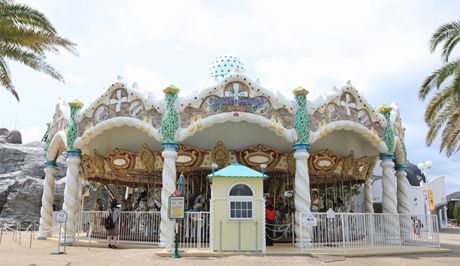
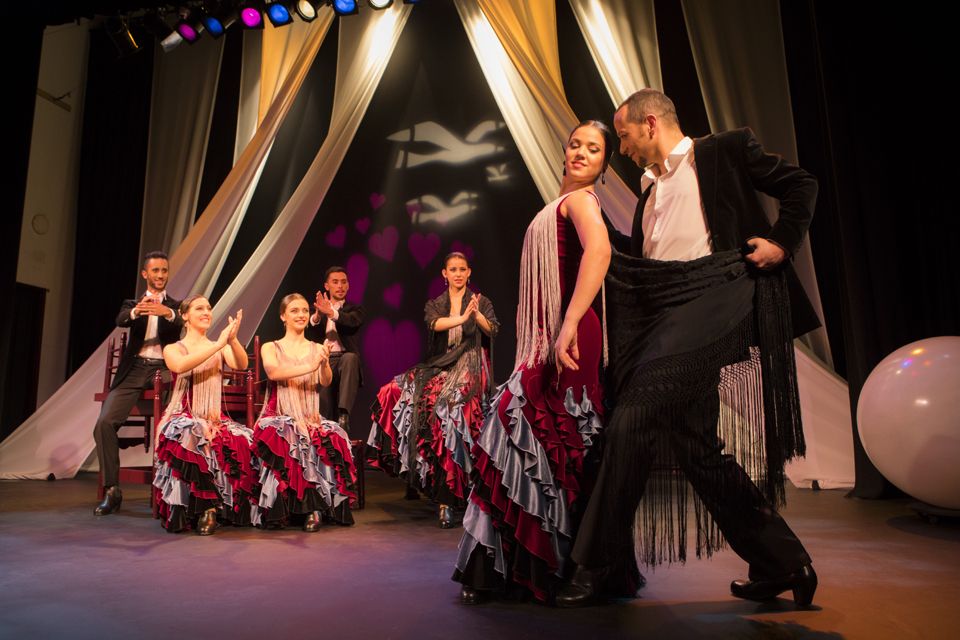
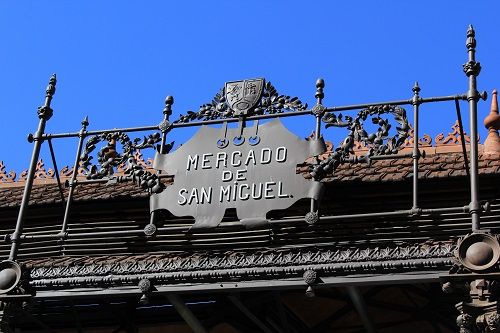







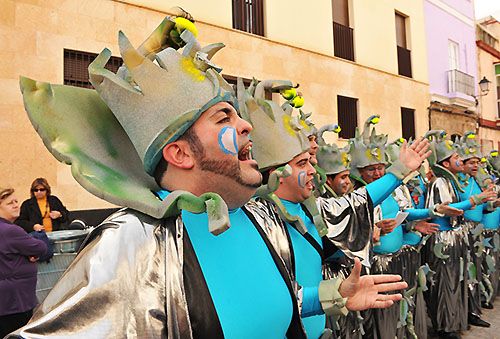


 Almodovar Movies Keep Winning
Almodovar Movies Keep Winning
